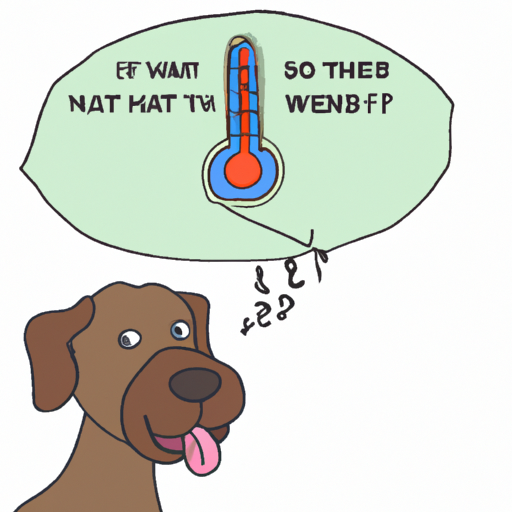Understanding Your Dog’s Behavior
As a caregiver to your beloved pet, you might often find yourself puzzled by certain behaviors your pet exhibits. Notably, why do dogs pant and shake? This behavior is not uncommon among dogs, but it’s crucial you understand why it occurs, so you can respond appropriately and ensure the well-being of your furry friend.
Causes of Panting and Shaking in Dogs
-
Excitement or Fear
Dogs often pant and shake when they are excited or scared. This is their way of dealing with the adrenaline rush. Just like how humans react in similar situations, dogs too have their physical responses. -
Heat
Dogs don’t sweat like humans do. Panting is their primary way of cooling down. If your dog is panting and shaking during hot weather, it could simply be their way of dealing with the heat. -
Pain or Discomfort
If your dog is in pain or discomfort, they might pant and shake. It’s their way of communicating their distress. -
Illness
Certain illnesses can cause dogs to pant and shake. Some of these include heart conditions, respiratory disorders, and neurological problems. -
Old Age
Older dogs are more likely to pant and shake. This is because their bodies are not as efficient as they used to be at regulating temperature or dealing with stress.
Here’s a table summarizing the various causes:
| Causes | Symptoms | Action Required |
|---|---|---|
| Excitement/Fear | Shaking, panting, alertness | Calm and reassure the dog |
| Heat | Panting, restlessness | Provide water and shade |
| Pain/Discomfort | Whining, limping | Consult a vet |
| Illness | Loss of appetite, lethargy | Consult a vet |
| Old Age | Fatigue, decreased activity | Regular vet check-ups |
When to Seek Veterinary Help
While panting and shaking can be a normal dog behavior, it’s important to keep an eye out for any accompanying symptoms that could indicate a serious health condition. If your dog’s panting is heavy, they seem distressed, or if they have other symptoms like loss of appetite, vomiting, or lethargy, it’s time to get them to a vet.
Tips to Comfort Your Panting and Shaking Dog
When your dog is panting and shaking, here are some things you can do:
- Ensure they have access to fresh water and a cool place to rest.
- If they are scared or anxious, provide reassurance and try to remove the source of their fear if possible.
- Keep them calm and avoid activities that may increase their anxiety.
- When in doubt, consult with a vet.
Frequently Asked Questions
Q1: Is it normal for my dog to pant and shake?
Yes, in many cases it’s normal for dogs to pant and shake. However, if the behavior is unusual or accompanied by other symptoms, it’s best to consult a vet.
Q2: Should I be worried if my dog is panting and shaking?
While it can be a normal behavior, if your dog is panting and shaking excessively, seems distressed, or has other symptoms, you should get them to a vet.
Q3: How can I calm my panting and shaking dog?
Ensure they have access to fresh water, a cool place to rest, and try to calm them down by providing reassurance.
Q4: Can old age cause my dog to pant and shake?
Yes, older dogs are more likely to pant and shake due to decreased efficiency in regulating body temperature and dealing with stress.



